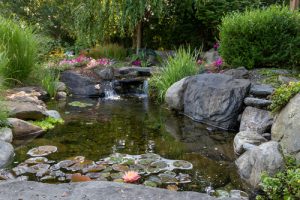 How to Choose the Right Plants for Your Pond
How to Choose the Right Plants for Your Pond
A pond is a great addition to any garden or outdoor space. It adds a tranquil and peaceful ambiance to your surrounding area and creates a habitat for wildlife. One of the best ways to enhance the beauty of your pond is by adding plants. However, it is important to choose the right plants that will not only complement the aesthetics of your pond but also thrive in the pond’s environment. In this blog post, we’ll provide some tips on how to choose the right plants for your pond.
Consider the Climate
The climate in your area will play a significant role in determining the types of plants that will thrive in your pond. It is important to choose plants that are native to your area and that can withstand the temperature fluctuations in your region. In colder climates, plants that can survive winter such as waterlilies and cattails are a great choice. In warmer climates, plants such as water hyacinths and lotus are ideal, as they can tolerate high temperatures.
Sunlight Requirements
Different pond plants require varying levels of sunlight to thrive. Ensure that you assess the amount of sunlight your pond receives throughout the day and choose plants that will do well in that amount of light. For ponds that receive full sun exposure, plants such as water lilies and lotus are ideal as they require at least six hours of direct sunlight each day. If your pond is located in an area with partial shade, plants such as cardinal flowers and water hawthorns may be a better choice as they require less light to thrive.
Choose the Right Size
When selecting plants for your pond, it is important to consider their growth rate and size. A small pond will require smaller plants, while larger ponds can accommodate bigger plants. If you choose a plant that grows too large, it can become crowded in the pond and stunt the growth of other plants. It is also important to consider how fast a plant will outgrow its container because you want to avoid overgrowth, which can put stress on the plant and lead to root rot.
Choose the Right Type of Plants
There are three main categories of pond plants: submerged, floating and emergent. Submerged plants grow underwater, requiring relatively still water and nutrient-rich substrate to thrive. These types of plants are ideal for controlling algae and for providing oxygen to aquatic animals. Examples of submerged plants include hornwort and najas.
Floating plants, as the name suggests, float on the surface of the water. These are great for a pond as they can help control the temperature of the pond, and they provide cover for fish and other aquatic animals. Water lettuce and water hyacinths are examples of floating plants.
Emergent plants grow in shallow waters and are ideal for planting around the edge of your pond. These are typically larger and more visually interesting plants, providing habitat for aquatic animals and helping to control the temperature of the pond. Examples of emergent plants include cattails and pickerel weed.
Consider Maintenance Requirements
Different pond plants require different levels of care and maintenance. Some plants may need to be trimmed regularly, while others require specific water temperatures or nutrient levels. It is important to choose plants that complement your lifestyle and schedule, ensuring that your pond does not become overgrown or over taken by weeds and algae.
It is also important to consider the level of maintenance required when choosing plants for your pond. If you have a busy schedule, choosing low-maintenance plants such as water lilies may be a better choice. However, if you have enough time to take care of your pond, you can consider high-maintenance plants like lotus that require more attention.
Conclusion
Adding plants to your pond not only enhances its natural beauty but also provides essential habitat for aquatic life. When choosing the right plants for your pond, consider the climate of your area, the amount of sunlight your pond receives, and the size of your pond. Also, consider the type of plants, the level of maintenance required, and their growth rate. By selecting appropriate plants that complement your pond’s environment and your lifestyle, you can create an attractive pond that is easy to maintain and that will last for many years.
Got questions about what plants would work best for your pond? Let us help! Contact us today to learn more about what we can do for you!

 How to Choose the Right Plants for Your Pond
How to Choose the Right Plants for Your Pond